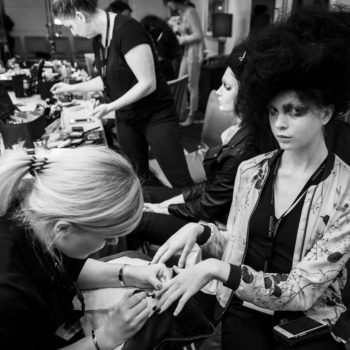Digital Has Allowed London Fashion Week to Bridge Runway & Retail
by Lindsay Rowntree on 24th Mar 2017 in News

We see reports about the challenges the high street is facing daily. Most recently, the BRC’s post-Christmas sales showed the challenge of driving footfall. In January, footfall was 1.3% down on a year ago, indicating that shoppers are turning to online. In this piece, Megan Dado (pictured below), regional senior director, Rakuten Marketing, explains how new digital technology is allowing consumers to get their hands on fashion collections faster – and it is exciting shoppers, presenting numerous marketing opportunities to use the tools in innovative ways.
Ecommerce has forced the fashion retail sector to respond to changing behaviour. Some fashion brands have evolved their physical presence; for example, shoe retailer Office allows shoppers to order in-store for delivery to their home address if their chosen colour or size is out of stock.
Other retailers have improved their online experience by investing in innovative delivery partners. For example, Doddle lets customers to pick up their delivery from one of their parcel shops, conveniently located at train stations, with changing rooms inside, so if anything doesn’t fit then it can be returned immediately.
These examples highlight that the fashion industry in the UK is ripe for disruption. As consumers shop around for better experiences, retailers are jumping on tech trends in order to meet their increasing demands; and the role of Fashion Week in spearheading these innovations is growing.
Giving instant access
Whilst London Fashion Week, in the past, has been a separate part of the fashion industry inaccessible to everyday consumers. Amancio Ortega, founder of Zara, recently overtook Bill Gates as the most successful entrepreneur financially. The success of the business is often attributed to their determination to be the very first to adopt the latest catwalk fashions.
We live in a world where people want everything now. On-demand apps like Uber and Deliveroo mean that people expect services to be available to them wherever they are. When collections are available to purchase straightaway, fashion brands awaken new sales opportunities because of the buzz evoked by Fashion Week.
Speed is a winning formula in fashion; it’s all about being first to adopt the latest trend. For example, Tommy Hilfiger released their highly awaited TOMMYXGIGI collection immediately after their show to retailers like ASOS, where it sold out immediately.
Reaching audiences beyond the frow
Once elite and aloof, digital has allowed London Fashion Week to become a much bigger affair than the shows themselves. Particularly effective in recent years has been the consumer appeal of working with social media influencers both on and off catwalks.
Data from Socialbakers around London Fashion Week revealed that Instagram was the winning social platform, notching up a total of 1,952,117 interactions during the show. Working with influencers on these platforms has been a winning formula for many brands including Shopstyle. The publisher worked with the likes of Arielle Charnas of Something Navy (913,000 Instagram followers), Amber Fillerup Clark of Barefoot Blonde (1.2 million followers) and Julia Engel of Gal Meets Glam (977,000 followers) for New York Fashion Week. The brand invited them to a place for bloggers to recharge between events, and they had the chance to borrow clothing to wear in return for creating video or photo content.
By working with the social media influencers generating buzz around specific collections, retailers can take advantage of significant marketing opportunities and reach new audiences. These influencers are trusted by their dedicated followers and bring an authentic aura to marketing. They are also trendsetters, able to endorse the fashion brands they love in a powerful way.
New shoppable technology
New tech like shoppable videos, chatbots and ‘buy buttons’ on Instagram and Facebook are also providing a win for the high street by giving consumers access to collections more quickly.
For example, Rebecca Minkoff live-streamed their #seenowbuynow collection online for the public to see and it was then available to purchase immediately. On their website, shoppers could watch the catwalk collection with online links to products inserted on top of the footage, and could buy instantaneously.
Burberry used Snapchat to tell their London Fashion Week story. The campaign was focused on Snapchat getting the scoop about bad model behaviour at the show. The brand is using technology to tell a story beyond the catwalks and brings the brand alive to appeal to a wider, digital audience.
In addition, British Vogue unveiled a Facebook Messenger bot that allows users to personalise fashion news. Users can follow the news about their latest designers.
Overall, new communications channels like Facebook Messenger’s chatbots, shoppable video content, and Instagram influencers are connecting new audiences with London Fashion Week, which used to be a detached fashion world. This digital technology is allowing consumers to get their hands on fashion collections faster, and it is exciting shoppers, presenting numerous marketing opportunities to use the tools in innovative ways. There’s a new meaning to fast fashion – and it’s digital first.









Follow ExchangeWire